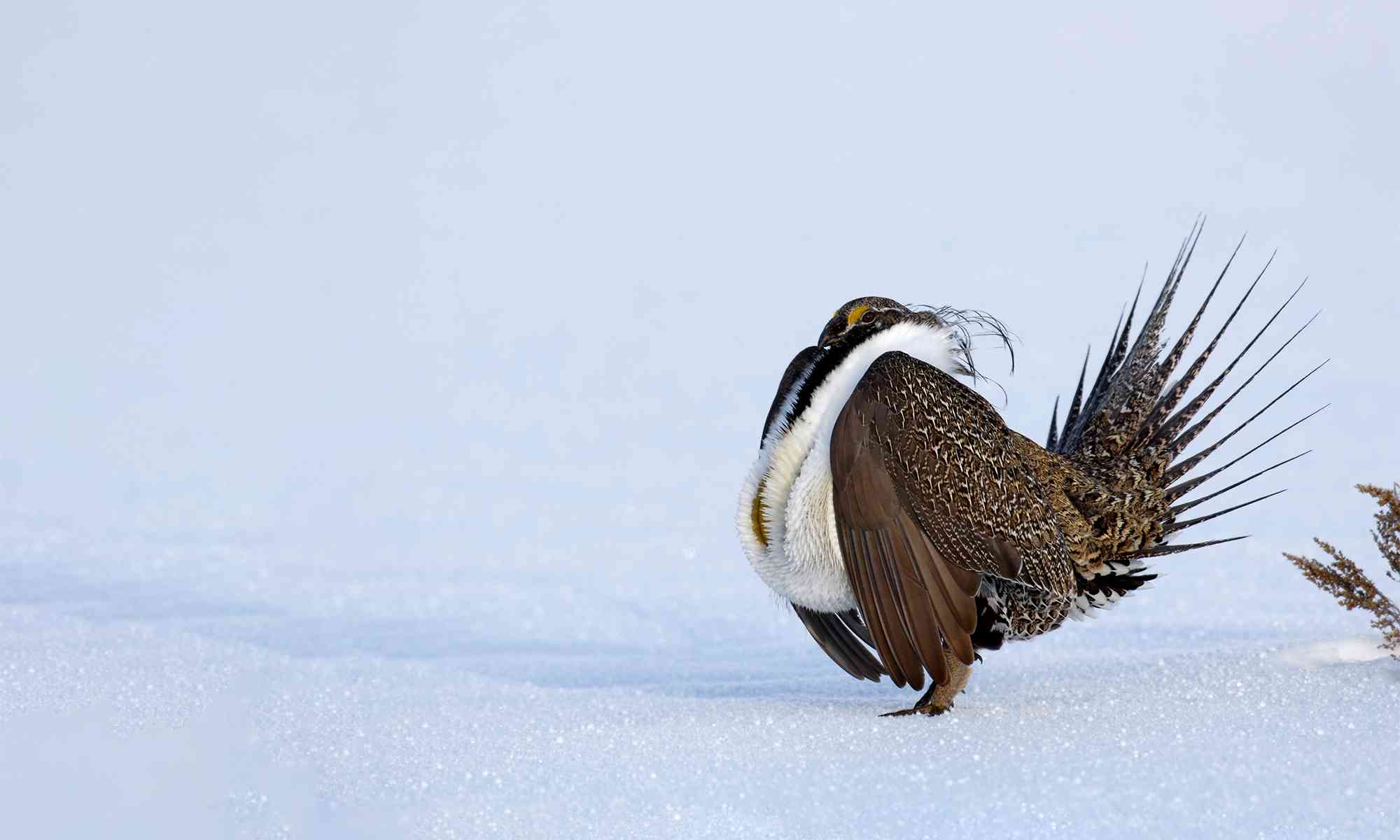
Greater sage-grouse and Gunnison sage-grouse are closely related species that live in the Sagebrush Sea, an ecoregion that blankets much of the interior west and supports hundreds of species of at-risk plants and animals.
Sage-grouse need large expanses of healthy sagebrush grasslands and functioning hydrologic systems to survive and flourish. Conserving sage-grouse benefits a host of other species in the Sagebrush Sea, like pronghorn, elk, mule deer, native trout, pygmy rabbit, and nearly 200 migratory and resident bird species.
Both the Gunnison sage-grouse and the greater sage-grouse are trending toward extinction. Currently there are likely 4,000 or less Gunnison sage-grouse left and they are facing a very uncertain future in western Colorado and southeastern Utah where development (energy and residential) and climate change are altering habitat.
While the greater sage-grouse still occur across much of the northern interior west, its populations continue to decline. A recent US Geological Survey study found that the Greater sage-grouse has declined 80% rangewide since 1965 and nearly 40% since 2002 and the downward trend is forecast to continue absent stronger conservation.
More than half of the Sagebrush Sea natural habitats have been lost to development and agriculture. Currently, we continue to lose on average over one million acres of sage-grouse habitat each year to a combination of fires, invasive species, drought, energy development, mining, and roads.
Sage-grouse and big game (for instance, mule deer, elk and pronghorn) often prefer similar habitats. Conserving sage-grouse habitats helps conserve big game habitats. See maps showing overlap of the highest priority greater sage-grouse habitat and crucial big game habitat for – Colorado, Montana, Nevada, Oregon, Utah, and Wyoming.
Defenders’ Impact
Defenders is working to ensure that federal agencies and western states implement conservation measures to restore these magnificent birds and the Sagebrush Sea ecosystems on which they depend.
In 2015, the federal government culminated an unprecedented multi-stakeholder planning process to develop a greater sage-grouse conservation strategy covering more than 65 million acres of federal public lands in the West. Defenders heavily engaged in the development of this strategy even as we remained concerned that it might not be adequate to assure recovery. The strategy barely had time to work before the Trump administration weakened it, eliminating key protections.
Given continued decline of the greater sage-grouse and its habitat – and the clear influence that climate change is having — the Bureau of Land Management is re-evaluating the (weakened) 2015 conservation strategy and is scheduled to finalize a revised greater sage-grouse strategy in 2024.
Similarly, the Bureau of Land Management is developing a rangewide Gunnison sage-grouse conservation strategy (for public lands) and is scheduled to finalize it in 2024.
Defenders is participating in the revisions of both the Greater and Gunnison sage-grouse conservation strategies. For both, Defenders developed and formally submitted rangewide proposals to protect a network of lands essential to sage-grouse survival as “Areas of Critical Environmental Concern.”